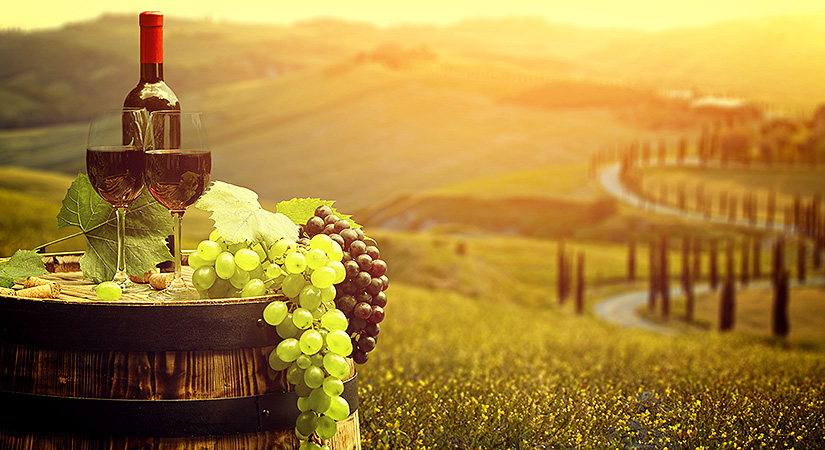


When Oliver Twist sang about “Food, glorious food”, cold jelly and saveloys were the limit of his culinary imagination. If he were to walk the streets of London today, he would discover a dining scene that has dramatically improved in terms of quality and variety.
London today is a compulsory destination for foodies, offering everything from Michelin-starred restaurants to mouth-watering street food stalls. If you’re looking for something quick, tasty and easy, you’ll find a wealth of foodie delights at the Borough Market on the South Bank, just a stone’s throw from London Bridge tube station. Grab a hot meat baguette, generously filled with roast loin of pork, stuffing and apple sauce, and take it for a long (or short, depending on how hungry you are) walk along the Thames.
Of course, there are plenty of other European destinations that act as beacons for lovers of all things food. Here are four more of our favourites:
Choosing just one Italian city or region is nigh-on impossible, but there’s a reason that Bologna in the north of Italy is fondly nick-named “La Grassa”, or “the Fat One”. Bologna is one of the wealthiest cities in Italy, which means that its inhabitants seem to have focussed their attention on producing some of the world’s best loved food. With around 25 miles of arcaded streets to explore, it’s easy to work up an appetite for its most famous export, ragù alla bolognese or Bolognese sauce, but if you prefer to refuel along the way, you can’t go past a parma piadina, a flatbread filled with local cheese, Parma ham and rocket. And what better way to finish your day than with a glass of chilled Prosecco at a table in the Piazza Maggiore?
France is another destination where you’re spoilt for choice when seeking a region that’s famed for its food. But if you’ve already dined in a Parisian bistro and devoured a bowl of bœuf bourgignon, a journey to the most westerly corner of the country will land you in Brittany, where fresh culinary delights await.
Picturesque seaside towns like Cancale line the Atlantic coastline and are responsible for the production of one of the world’s most desired delicacies: the oyster. Find yourself a table in a waterfront restaurant and enjoy a plate of freshly shucked oysters au naturel whilst looking out at the bay from where they were grown. Wash them down with a glass of cold, local Muscadet wine and you’ll truly be in foodie heaven. Of course, when the rosy glow fades, there are still crêpes lightly dusted with icing sugar, galettes enfolding melting cheese and mushrooms, seafood platters heaped high with mussels, langoustines, crabs, cockles and more oysters…
On the north Atlantic coast of Spain, in the heart of the Basque region, lies the beautiful city of San Sebastián. Widely touted as the one of the world’s greatest culinary cities, it boasts more Michelin stars per head of population than any other city, but it’s for its pinxtos that it’s perhaps most celebrated.
Pinxtos are the Basque version of Spanish tapas, and are named for the spikes or toothpicks that are used to fix the ingredients to the bread. More than just a bar snack, they’re a way of life in the Basque region. The Old Town of San Sebastian, with its narrow cobbled streets and darkly atmospheric taverns, is the ideal place to try this unique style of socialising. Simply choose a tavern and head for the bar, where you will find an array of platters ranging from simple assortments of bread and cheese to elaborate seafood creations. Order a beer and a selection of pinxtos, line up your toothpicks as a way to keep track of what you’ve eaten, and pay when you’re ready to move on to the next tavern.
The Istrian peninsula is shared by three countries: Croatia, Slovenia and Italy, with the largest portion happily claimed by Croatia. Its location on the Adriatic and its close proximity and shared heritage with northeast Italy has given its cuisine a Mediterranean influence, but with touches that are pure Croatian.
If you’re a fan of fresh and simple seafood, pasta, locally grown olive oil and air-dried local ham, you’ll find much to be excited about. Pretty towns like Rovinj, with its multi-hued pastel houses, dark blue waters and hilltop church create a stunning backdrop to a meal that features the both the blue (marine) and green (agricultural) sides of Istria. Try a traditional brodet made with at least seven different kinds of local fish and follow with boškarin carpaccio, using meat from the iconic Istrian cattle of the same name.
Whether you prefer to immerse yourself in the cuisine of a single locale or embark a culinary tour that takes in a selection of highlights, there are countless options to choose from.
If these few titbits have made your mouth water, talk to your personal travel manager about designing a gastronomic European adventure that will tempt your taste buds.